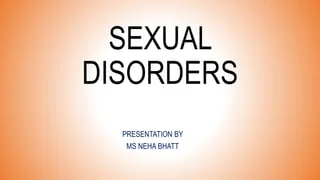Response 1 (Sexual Disorder Assessments-Nursing Paper Example)
You have an excellent discussion on the R. v. Mohan case and sex offender risk assessment tools like the Sexual Offender Risk Appraisal Guide (SORAG) and the Rapid Risk Assessment for Sexual Offense Recidivism (RRASOR). I want to expand on the strengths of SORAGO and RRSOR sex offender risk assessment tools. The SORAGO tool consists of 14 items that can accurately sexual violence and recidivism among incarcerated individuals (Rettenberger et al., 2017). It also has a higher validity and reliability in assessing violent recidivism than other instruments, making it ideal for informing parole proceedings. Additionally, it can only be administered by well-trained professionals, increasing its potential to produce reliable assessment results (Sexual Disorder Assessments-Nursing Paper Examples).

Consequently, RRASOR has an integrator reliability score of .90 to .94, with higher predictive accuracy for sexual offense recidivism among inmates (Bradford et al., 2021). It can also effectively differentiate sexual recidivism from general criminality, affirming its widespread use among forensic psychologists. The level of Service Inventory-Revised (LSI-R) tool can also accurately assess sexual violence risk among inmates. It consists of 54 items offering a comprehensive assessment of every aspect of an individual’s criminal history and needs (Wolf et al., 2023) (Sexual Disorder Assessments-Nursing Paper Examples).
References
Bradford, J. M., Chaimowitz, G., Levin, G., & Olagunju, A. (2021). Sexual Offender Recidivism. Sex Offenders: Identification, Risk Assessment, Treatment, and Legal Issues, 139. ISBN: 9780190884369 Rettenberger, M., Rice, M. E., Harris, G. T., & Eher, R. (2017).
Actuarial risk assessment of sexual offenders: The psychometric properties of the Sex Offender Risk Appraisal Guide (SORAG). Psychological Assessment, 29(6), 624. https://psycnet.apa.org/doi/10.1037/pas0000390 Wolf, V., Mayer, J., Steiner, I., Franke, I., Klein, V., Streb, J., & Dudeck, M. (2023).
The Predictive Accuracy of the LSI-R in Female Forensic Inpatients—Assessing the Utility of Gender-Responsive Risk Factors. International Journal of Environmental Research and Public Health, 20(5), 4380. https://doi.org/10.3390/ijerph20054380
Response 2
Your post on R. v. Mohan case and sex offender risk assessment tools like Static-99 and the Abel Screening Test is informative. I want to explore the strengths of the two sexual risk assessment tools; Static-99 and the Abel Screening Test. Static-99 has a predictive validity of 0.67-0.69, indicating a higher potential to provide accurate sexual offender risk assessment results (Reeves et al., 2018). It also effectively ranks offenders based on the relative risk of sexual recidivism. The tool utilizes only sexual recidivism risk factors, making it ideal for predicting sexual violence risks among offenders (Sexual Disorder Assessments-Nursing Paper Examples).
Consequently, the Abel Screening Test is accurate and reliable in assessing the risk of sexual violence against children, adult men/women, and sadistic behaviors (Brodsky et al., 2021). Its visual reaction time can help identify an offender’s risk of committing specific offenses. The Sexual Violence Risk-20 (SVR-20) assessment tool can also assess the risk of sexual violence among offenders. It can determine recidivism risk and identify factors contributing to sexual violence among offenders (Sexual Disorder Assessments-Nursing Paper Examples).
References
Brodsky, D. J., Saleh, F. M., & Bradford, J. M. (2021). Sex Offenders: Identification, Risk Assessment, Treatment, and Legal Issues. (pp. 193–194). United States: Oxford University Press, Incorporated. ISBN: 9780190884369.
Hart, S. D., & Boer, D. P. (2020). Structured professional judgment guidelines for sexual violence risk assessment: The Sexual Violence Risk-20 (SVR-20) Versions 1 and 2 and Risk for Sexual Violence Protocol (RSVP). In Handbook of violence risk assessment (pp. 322-358).
Routledge. ISBN: 9781315518374 Reeves, S. G., Ogloff, J. R., & Simmons, M. (2018). The predictive validity of the Static-99, Static-99R, and Static-2002/R: Which one to use? Sexual Abuse, 30(8), 887–907. https://doi.org/10.1177/1079063217712216
